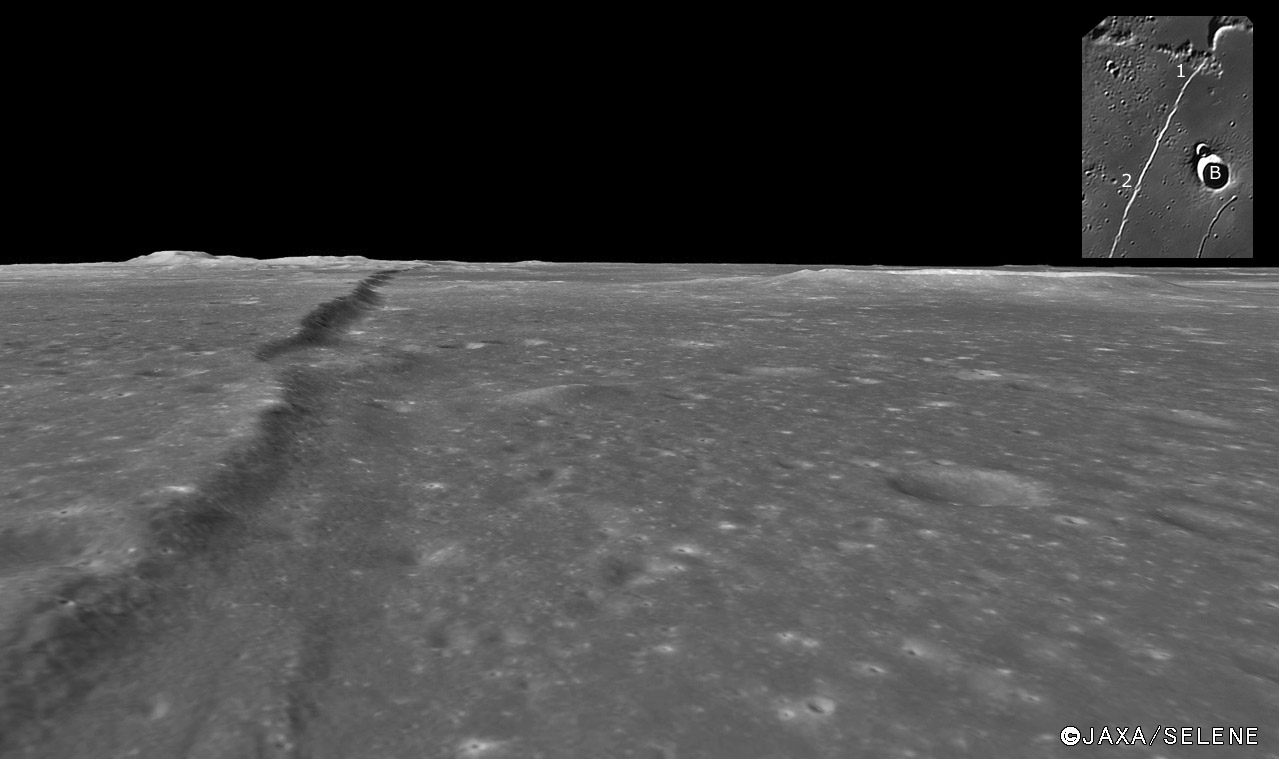November 13, 2009
No Longer Straight

image by " rel="nofollow JAXA-Kaguya Image Gallery with inset from " rel="nofollow Zac Pujic
One of the most common subjects for futurist drawings of the Moon before the space age was the Straight Wall - and here we finally see an image with a similar
perspective. And what a view it is, with the Wall, not quite so straight, stretching nearly to the horizon, with the bright-rimmed crater Birt (B on inset) seen nearly
in profile at upper right. I must admit some disappointment - I had pictured the Wall having more of a clean slope with a sharp edge at the top. But it is like 3.5
billion year old crater rims, worn to a roundness by uncountable small impacts and seismic shakes. The nearest section of the Wall seems less steep than more
distant parts, where according to work of " rel="nofollow GLR (pdf. p 41), the maximum height is almost 500 m and the slope reaches 21°. The nick at point 2 in the inset appears
on the Kaguya image to be an old crater; from Earth-based images it appeared more like a sloping ridge along the front of the Wall. This view also suggests a relatively
straight tonal boundary that parallels the scarp to the right of it - I don't know if it is real nor what it might be. Finally, the mountains at the upper left horizon make up
the cross guard of the sword handle in the " rel="nofollow sword that Huygen's compared the Straight Wall to.
" rel="nofollow Chuck Wood
Technical Details
I assume this view was achieved by using stereo images from Kaguya's Terrain Camera to construct a digital terrain map. The map, with the image draped over it,
was then viewed from the north looking southward down the fault.
Related Links
Rükl plate 54
A higher angle, but still oblique " rel="nofollow view.



